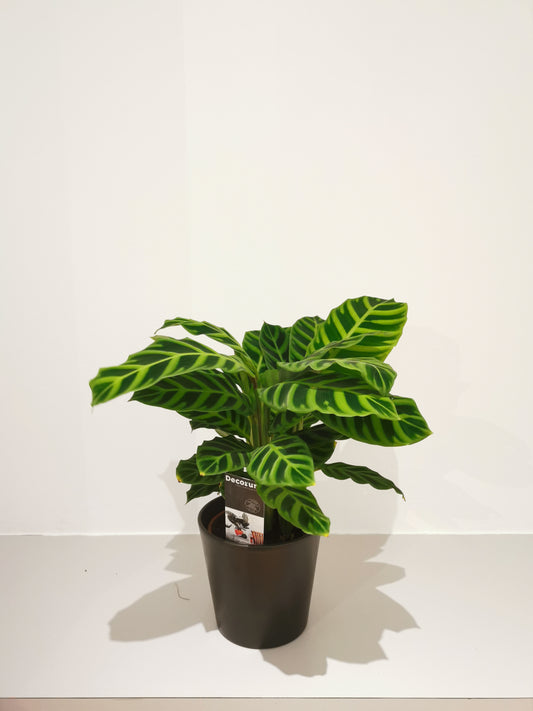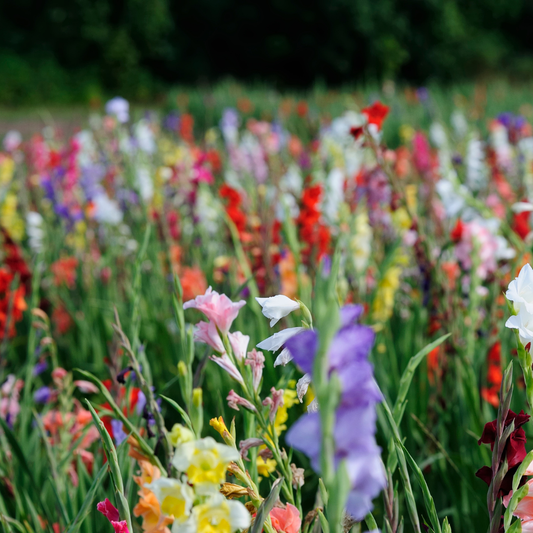
Dieffenbachia care
Share
Dieffenbachia care isn’t rocket science, but it’s important to understand a few key aspects to ensure your plant stays happy and healthy. In this guide, we’ll cover origins and species, care tips, toxicity, and common problems.
Origin and Species of Dieffenbachia
Origin
Named after Austrian botanist Ernst Dieffenbach, the Dieffenbachia is native to the tropical regions of America. This plant thrives in the lush environment of Central and South America, and it's no wonder it does so well as a houseplant.
The name "Dieffenbachia" is derived from the Austrian botanist Ernst Dieffenbach. He was a member of an expedition to the South Pacific and New Zealand in the early 19th century. Although Dieffenbach himself had no direct connection with discovering the Dieffenbachia plant, the name was assigned to the plant in honor of his contribution to botany.
Species
There are over 30 different species of Dieffenbachia. Some popular varieties include:
- the Dieffenbachia Camilla,
- the Dieffenbachia Compacta,
- the Dieffenbachia Tropic Snow,
- the Dieffenbachia Dumb Cane,
- the Dieffenbachia Senguine,
- the Dieffenbachia Amoena.
Care
Watering
Dieffenbachias like moisture, but overwatering can lead to root rot. Make sure the top inch of soil dries out between waterings. Water when the soil feels moist.
Light and location
This plant does best in bright, indirect light. Direct sunlight can burn the leaves. An ideal spot is near a window with curtains to filter the light.
The right light and location are essential for the growth and well-being of your Dieffenbachia. Here are some important considerations:
-
Bright, Indirect Light : The Dieffenbachia thrives in bright, indirect light. Avoid placing it in direct sunlight, as this can burn the leaves. A north- or east-facing window is often ideal. If you don't have a window like this, you can also place the plant a little further away from a window with direct sunlight or use curtains to filter the light.
-
Shade Tolerance : The Dieffenbachia is relatively tolerant of shade and can survive in lower light environments, although growth may be slower. This makes it a good choice for areas where it is difficult to get enough light.
-
Turning the Plant : Because Dieffenbachias tend to grow towards the light, it is a good idea to turn the plant a quarter turn regularly. This will help it grow more evenly and maintain its attractive shape.
-
Artificial Light : If you live in an area without natural light, you may want to consider using artificial light. Grow lights with a spectrum suitable for indoor plants can help provide Dieffenbachia with sufficient light.
Cuttings
Want to grow more Dieffenbachias? You can! Cuttings are a great method. Cut a stem just below a leaf bud and plant it in moist potting soil. It can take several weeks to several months for the cutting to develop enough roots to be considered an independent plant. Patience is the key to success when propagating Dieffenbachia cuttings. It is a rewarding way to expand your plant collection and delight others with this beautiful houseplant.
Potting soil
Use a well-draining potting soil that is suitable for houseplants. A mixture of potting soil and perlite or bark can promote air circulation around the roots. This is the ideal potting soil for the Dieffenbachia .
Humidity
Dieffenbachias thrive in average humidity. An occasional misting can help, especially if you live in a dry climate. Dieffenbachias grow best in moderate humidity. This means that they are comfortable in humidity levels between 40% and 60%. In most indoor environments, especially in temperate climates, humidity levels tend to be lower than in their natural habitat. To increase the humidity for your Dieffenbachia, there are a few simple solutions you can use.
Is the Dieffenbachia Poisonous?
Dieffenbachia is known for its toxicity. The sap contains oxalate crystals and can cause severe irritation upon contact with the skin or ingestion. Keep this plant out of reach of pets and children. If accidental contact occurs, consult a doctor immediately.
Discover other plants that are not poisonous.
Common Problems
Brown edges on leaf
Brown leaf edges often indicate overwatering. Make sure the soil is not too moist between waterings. It is always important to prevent root rot .
Yellow leaves
Yellow leaves can indicate too much direct sunlight. Move the plant to a softer light spot. A little further away from the window, or a spot away from the South.
A flower on your Dieffenbachia
Although rare, Dieffenbachias can bloom occasionally. The flowers of the Dieffenbachia are usually inconspicuous and white in color. This phenomenon is not common, and it is important to know how to react when your Dieffenbachia is in bloom.
The appearance of flowers can lead to a dilemma, because it takes the energy of the plant away from the leaves. Since it is now common knowledge that the beauty of the Dieffenbachia lies mainly in its leaves, many plant lovers consider removing the flowers. Cutting off the flowers can help to promote the growth and development of new leaves.
The Dieffenbachia is a beautiful addition to any indoor space and with the right care can thrive for many years. It is a plant with character and beauty, perfect for both novice and experienced plant lovers. We hope this guide helps you get the most out of your Dieffenbachia and solve some common problems. Happy planting!






